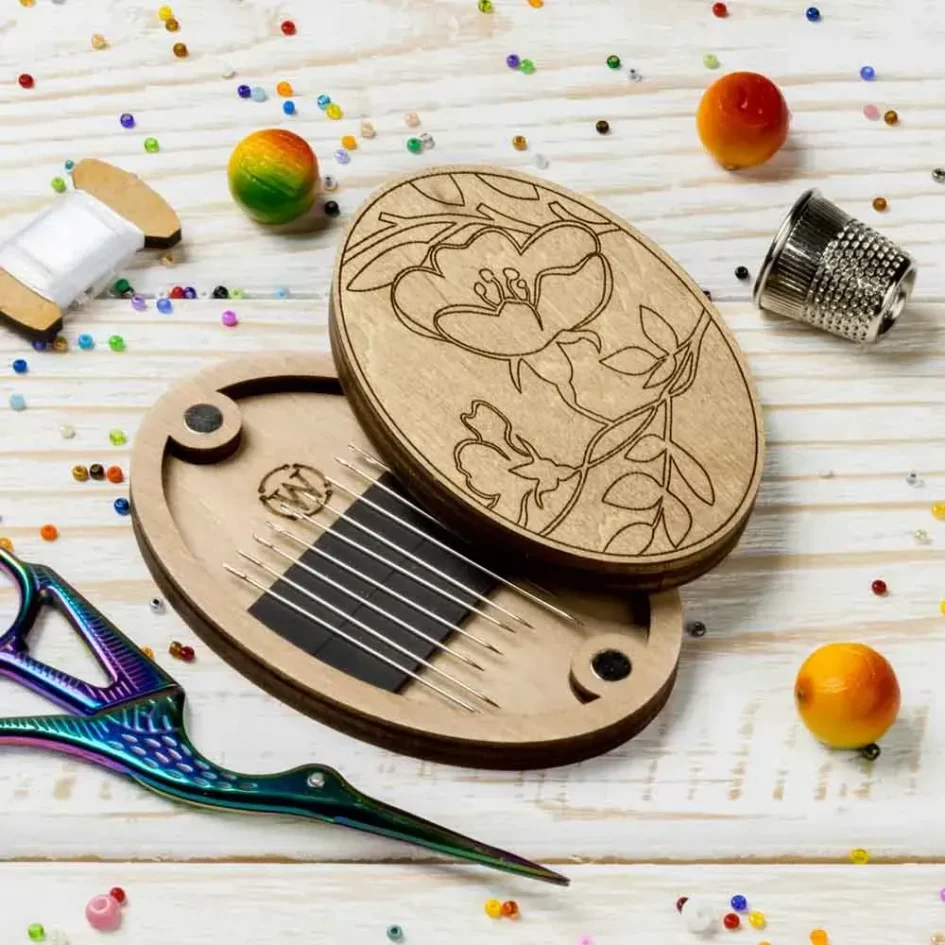When it comes to needlework, every little thing matters — especially when it comes to organizing a workspace. One of the often forgotten but extremely useful accessories is a needle storage box. Often, when searching for the right option on the Internet, the phrase needle box price comes across, because the price can really vary greatly depending on the material, size and brand.
Why do you need a needle box at all
Needles are not just consumables. Improperly stored, they get lost, dull, rust, or even cause injury. To prevent this from happening, it is better to think in advance about where and how they will lie. The right box allows you to:
- Keep everything in order and handy;
- Avoid accidental injections;
- extend the service life of needles;
- save time searching for the right one;
- save them by type: manual, for sewing machine, for beads, and so on.
A box is not just a container, it is part of your storage system.
What are the boxes and how do they differ?
There are many different types of needle boxes, from the simplest plastic ones to thoughtful organizers with sections and labeling. In order not to get lost, it is useful to know what types there are:
- Plastic with a lid. The most affordable and popular option. Suitable for beginners.
- Metal boxes. More durable, with protection from moisture. They often have a vintage style.
- Magnetic holders. They are convenient because the needles do not crumble and are easily fixed.
- Boxes with a soft pillow inside. They keep the shape of the needles well and protect them from breakage.
- Multi-tiered organizers. Ideal for those who sew often and a lot. There is a place for needles of different types.
When choosing a box, think about where it will be stored — in a drawer, on a table, or to take with you. Size and weight also matter, especially if you often take materials on the road.
What to look for when choosing
Before you buy a box, you should ask yourself a few simple questions. This will help you avoid unnecessary purchases and make your choice faster.
List of important criteria:
- Material. Plastic is cheaper, but it can break. Metal is durable, but heavier.
- Size. Depends on the number of needles. A small one is suitable for home use, and a larger one for craftsmen.
- The presence of sections. If you have many types of needles, it is better to take a box with partitions.
- Protection from moisture. This is especially true if the needles are stored in the kitchen or bathroom.
- Transparent lid. Allows you to quickly see the content.
- Design. Not the least detail if the aesthetics of the workplace are important to you.
Choose a practical model that will last a long time and won’t take up too much space.
How to take care of the box and what else to put in it
Even a simple box will last longer if properly cared for. Do not leave it open, especially in areas with high humidity. Wipe it from time to time with a dry cloth, and if the material allows, with a wet one. Do not overload — this will help to avoid damage to locks and lids.
It is useful to additionally store in a box:
- small pieces of paper with the names of the needles;
- a piece of sandpaper for sharpening;
- pins or a threader;
- magnet — if there is no built-in inside;
- compact scissors or thimble.
This way, everything you need will be in one place — and at hand.
A well—chosen needle storage box is not a luxury, but a necessity for anyone who is engaged in sewing, embroidery or beadwork. It’s a simple accessory that makes your workflow faster, safer, and more enjoyable. Take the time to choose and take into account how often you use needles, where you work and how many consumables you have.

